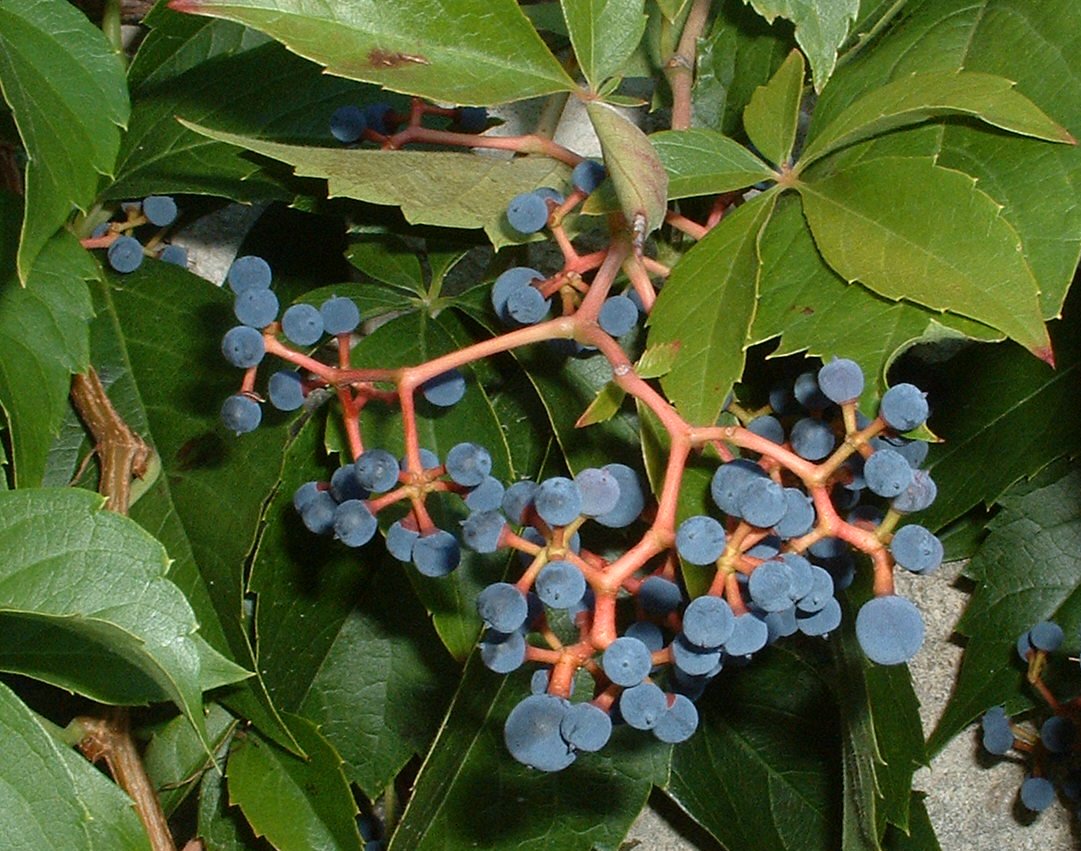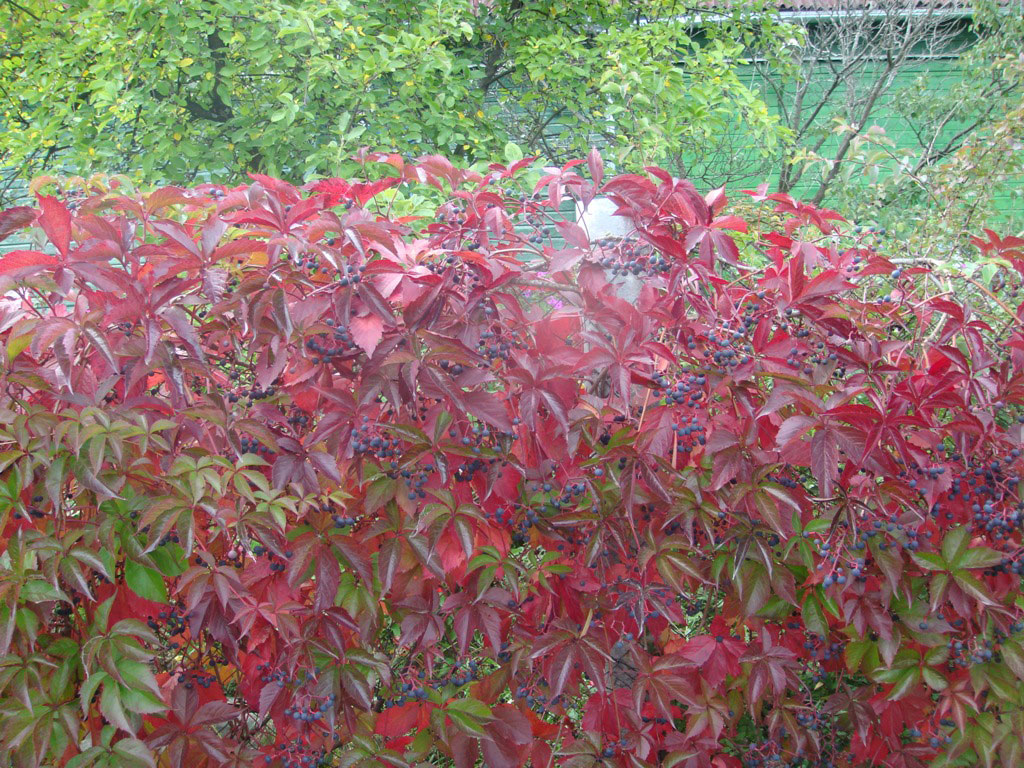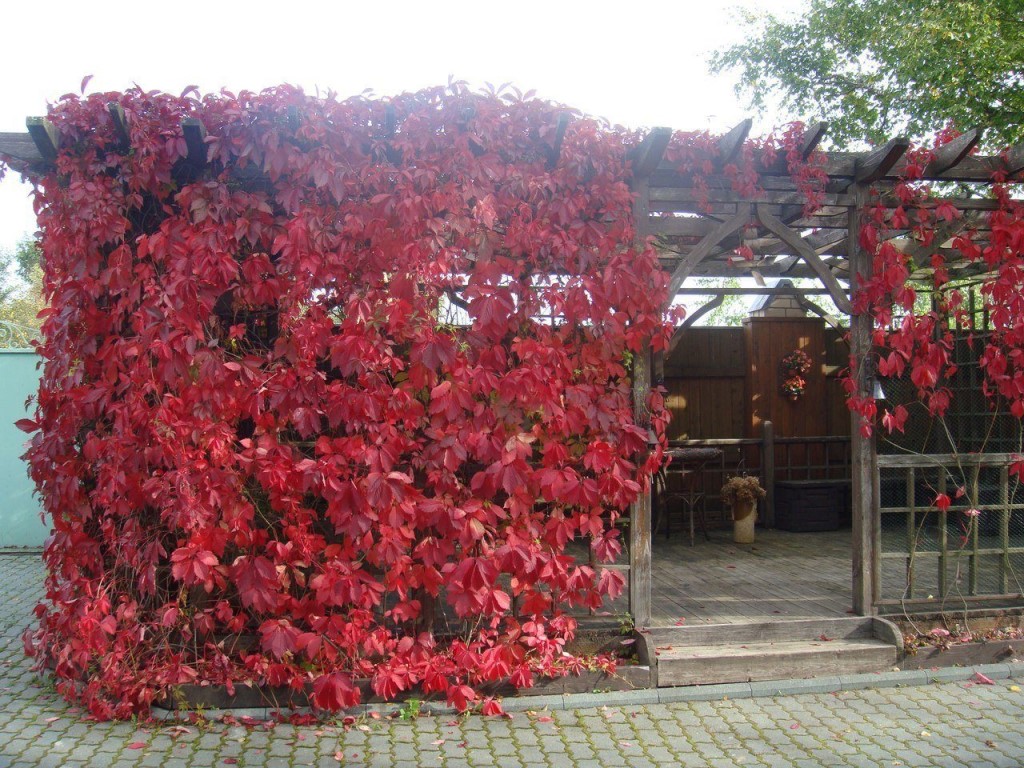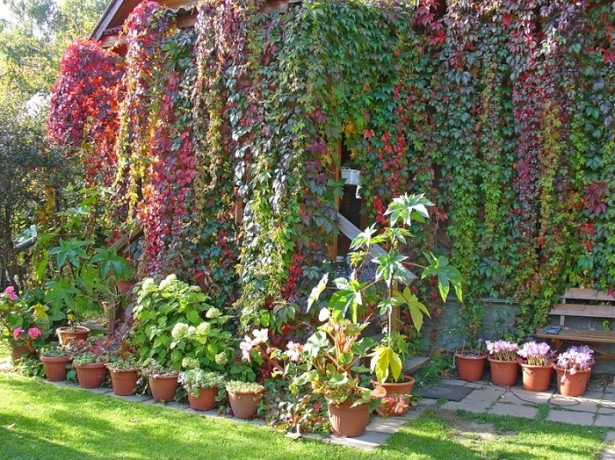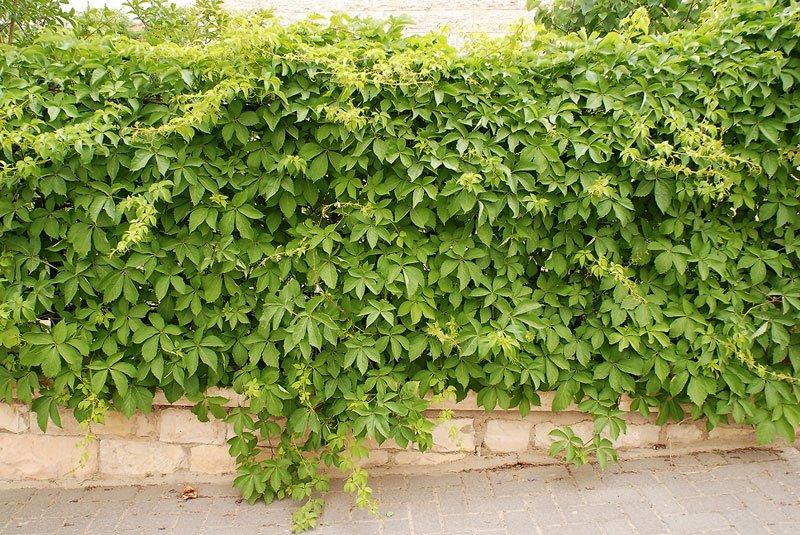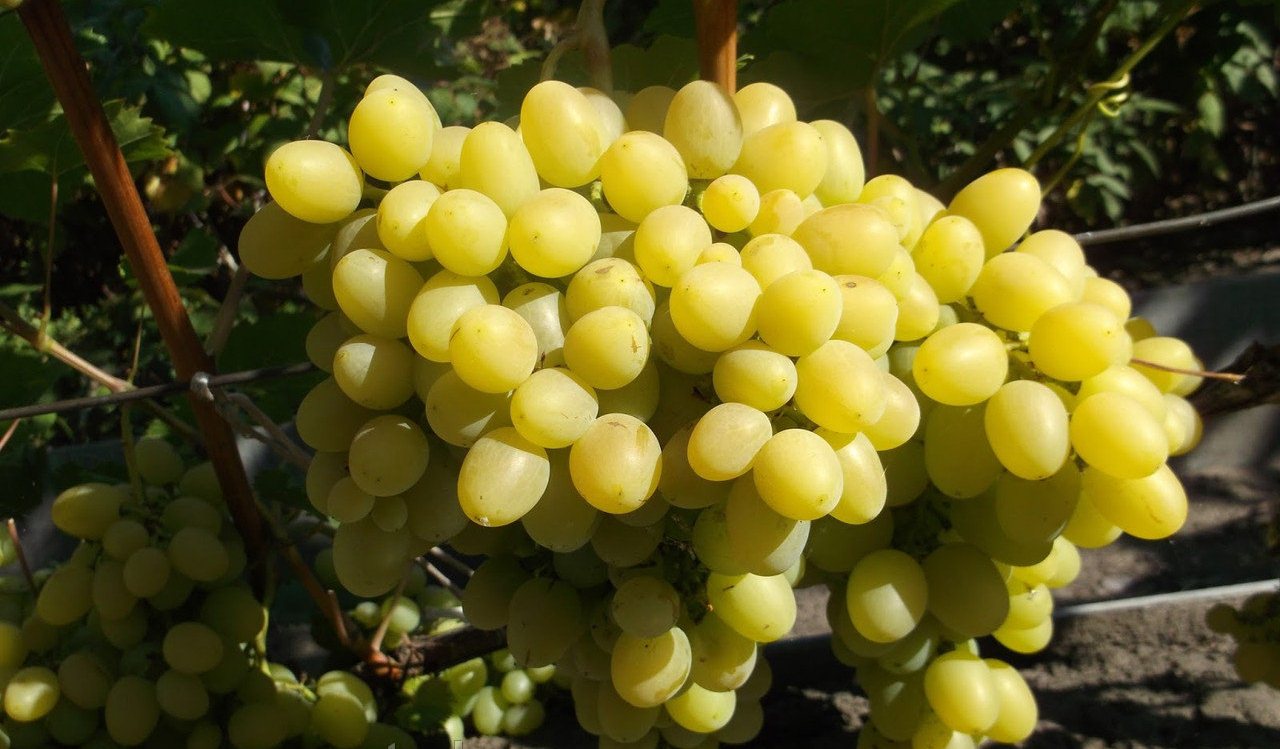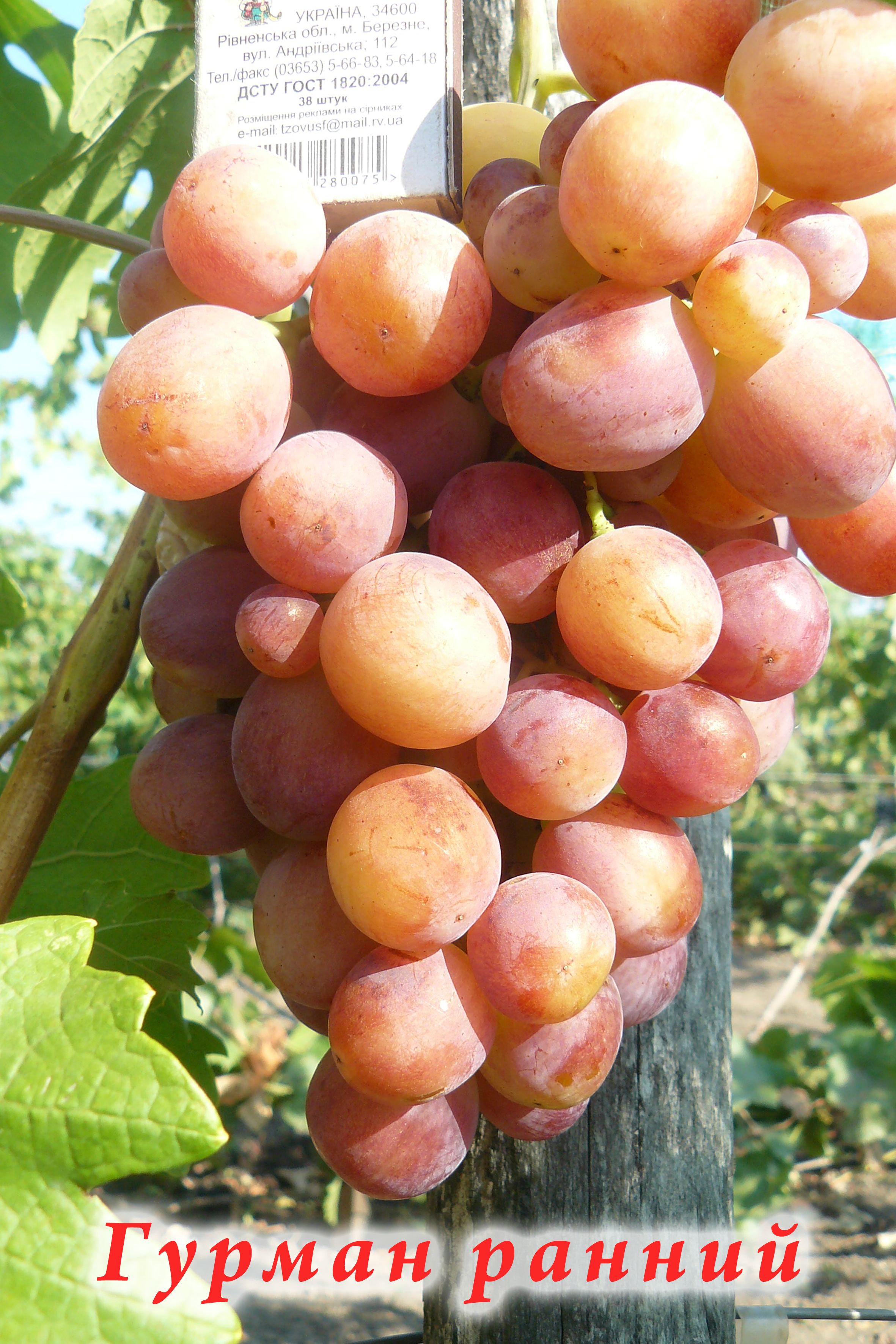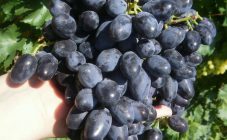Content:
A living climbing hedge on the site always looks unusually beautiful. You can create it by planting plants that are highly decorative. These include wild grapes, a representative of the Vinogradov family of the same name. This unpretentious plant is familiar to many owners of summer cottages and household plots.
Wild grapes, description and features
Maiden grapes are liana, characterized by an abundance of foliage and the ability to grow quickly. The leaf cover serves as the basis for the decorativeness of the plant: bright, wide leaves of a complex shape add a rich green color to the landscape. And in the fall, climbing grapes look even more elegant, thanks to the variety of colors.
Wild grapes have many names. One of the most common - girlish (virgin), he received for the ability to self-pollination. Also, this plant is known under the names Maiden's Tears, Female or Ladies Grapes.
Scourges of plants, depending on the variety, can grow to a length of 15 m. Moreover, they firmly cling to the surface with antennae, so that it is easier to break off the shoot than to unhook it. Thanks to such creep and tenacity, girlish grapes do not need additional support. They may be needed only at the beginning of a seedling's life, until it reaches the fence or wall.
At the beginning of autumn, medium-sized dark berries appear on the grapes, a favorite delicacy of birds.
Unlike cultivated grape varieties, wild ones are not afraid of frost. Many do not require shelter for the winter: they have enough snow.
Another advantage is the ability to plant in shaded areas. Climbing grapes take root well on the north side of the house, in the shade of a solid high fence. The cultivated forms of the plant cannot boast of such resistance.
Creeping grapes very rarely suffer from insect attacks and diseases. Therefore, he does not need spraying and seasonal soil treatments.
Types and varieties
There are two main varieties of wild grapes: five-leafed and tri-pointed. You can distinguish them by the shape of the sheet, which becomes clear from the name.
The first one came to us from North America. This unpretentious species is capable of producing long shoots (up to 30 m), capable of climbing up a steep surface. The leaves are palmate, pointed at the tips. They differ from tri-pointed ones in a darker shade. Fruits of five-leaf grapes are small, black. Unsuitable for food!
The following varieties are widespread:
- Star Shovers, aka Variegated, known for its marbled leaves;
- Don Juan, striking the imagination in the fall with purple leaves;
- Hairy, slightly pubescent;
- Wall, loach, easily attaches to vertical surfaces.
Five-leaf grapes are grown on balconies, used as home decorations, or used as hedges.
The tri-pointed type of creeping grapes came to us from the territories of Japan and China. In natural conditions, it grows among rocks, strongly entwining them. It is sensitive to cold weather.In areas with frosty winters, starting from the Moscow region and ending with the Urals, you will have to take care of a winter shelter.
The lianas of the plant are long, up to 40 m. Supplied with tenacious tendrils with suction cups. Densely leafy. Does not need additional supports. The leaves are deep green, red in autumn.
The fruits are inedible, dark, covered with a bluish bloom.
The most common varieties include Green Spring, which has large leaves, and the small-leaved variety Vich.
Tri-pointed grapes are also good as an ampelous plant, the formation of hedges, decoration of balconies.
Use in landscape design
The use of creeping decorative grapes for landscaping and improving the site is carried out in several ways.
- Formation of hedges. Able to climb almost any surface, ornamental grapes quickly braid wooden fences or netting, so that in summer they are not visible under the deciduous carpet. You can use decorative girlish grapes for zoning the site. It should be remembered that strong vines can damage too old and dilapidated fences.
- Vertical gardening. For ennobling various structures, buildings, arches, gazebos or sheds, wild grapes are one of the best options. Its tenacious tendrils attach securely to vertical surfaces, and its intense growth helps to cover a large area.
- Decoration of balconies and loggias. Greenery enlivens balcony partitions and adds a pleasant cool shade. The grapes take root well in containers, growing and delighting with fresh foliage until autumn.
Planting maiden grapes
Plant propagation is carried out by cuttings or layering. However, it is possible to grow Ladies' grapes from seeds. But this is a complex process that requires special skills.
The optimal landing time occurs in April-May, but landing before winter, in September-October, is also quite effective.
Planting of seedlings obtained by the cuttings method is carried out as follows:
- A hole is being prepared, measuring 60 × 60 cm.The distance between adjacent holes should not be less than 30 cm.
- Drainage is laid (crushed stone, pebbles, sand) with a layer of 20 cm.
- Peat or humus is added to the hole. This is not a necessary step, the grapes take root well in ordinary garden soil.
- The shoot is pruned, leaving 4 buds.
- The resulting cutting is placed in a hole and sprinkled with earth, burying 2 lower buds into the soil.
- Plantings are watered and covered to protect from the sun.
- After rooting, the protection is removed.
You can root a long vine from an adult plant. For this, a 2-meter shoot is cut off, buried 2 cm in the soil and watered abundantly. Soon, roots will appear on the nodules. After that, it can be divided into short cuttings and planted according to the above scheme.
The nuances of care
Despite the unpretentiousness of the girl's grapes, you still need to care for it.
Just a few simple procedures will help support shoot development and protect them from potential diseases:
- In May-June, you can apply 50 g of mineral complex fertilizers under each bush. After a couple of months, the procedure is repeated.
- Wild grapes do not need regular watering. If the summer is dry, you can pour 2 buckets of water under each root. This should be done approximately once a month.
- At a plant stretching upwards, the roots are sometimes bare. In such cases, fresh soil is poured under the bush and hilling is performed.
The grape of the Maiden's Tears variety feels great without pruning, but it is still worth carrying it out, in order to increase decorativeness.
The first time the plant is pruned in early spring. At this time, dried, damaged shoots are removed, or those that block the view, stretch to the porch, crawl under the roof.
In the summer, you can carry out a second formative pruning by removing the shoots that block the entrance to the gazebo or interfere with the growth of other plants on the site.
The tough vines of wild grapes are inedible by insects. Rodents do not feed on them either, however, they can wade through them into the dwelling. Therefore, it will not be superfluous to periodically lay out bait for rodents at the roots of the plant.
The leaves of grapes of this variety are also not threatened: insect pests are indifferent to them. They are only attacked by aphids, which can be eliminated in various ways. The plant is treated with soapy water mixed with alcohol in a 3: 1 ratio or any effective insecticide used on fruit trees.
Possible uses of the fruit
The berries of wild grapes growing in the clusters are considered by many to be poisonous. In fact, this opinion is erroneous, they are edible. The fruits are simply very tasteless, you can be convinced of this by trying one of them. And poisoning can occur only if you consume an excessive amount of berries. However, cases of such poisoning have not yet been recorded: no one of their own free will eats tasteless berries.
Despite the unflattering description of the taste, the fruits of wild grapes have established themselves as a good traditional medicine that helps with some diseases.
The beneficial properties of these fruits are due to the content of certain substances in them, such as:
- dextrose;
- pectin;
- tartaric, malic and citric acids.
Supporters of traditional medicine advise taking funds based on the fruits of wild grapes in the following cases:
- diarrhea;
- disturbances in the work of the gastrointestinal tract;
- deterioration of metabolism;
- increased acidity of gastric juice.
Wild grapes are also useful for improving the composition of the blood, the formation of blood cells.
Graceful vines of wild grapes will enliven any corner, making it cozy and original. This makes it a real find for landscape design. And the simplicity of care and unpretentiousness of this plant will save the owners from unnecessary trouble. Inedible berries, although they will not decorate homemade dishes, are useful in the fight against diseases.
